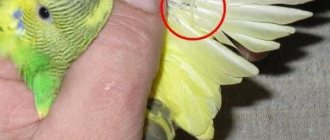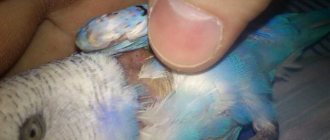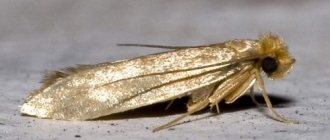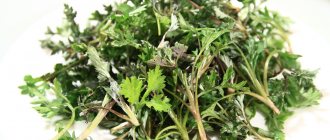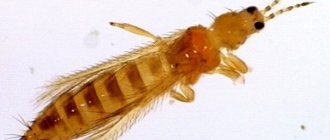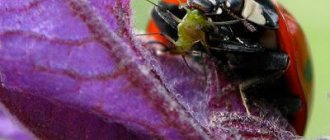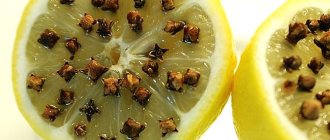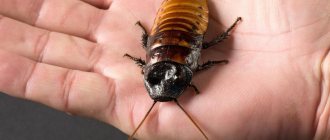Causes
A healthy plant can resist all kinds of pests and diseases thanks to its own immunity. Any changes in the color and shape of orchid leaves indicate a hidden problem, the reason for which lies in the weakening of the immune defense. And this, in turn, is an indicator of errors in care and maintenance. In addition, disruption of biological rhythms, for example, the absence of a resting phase, can undermine the vitality of the plant. Artificially stimulated, long-term, continuous flowering leads to the fact that a weakened plant becomes an accessible target for any infection and easy prey for parasites.
The host of the Orchids Queens video channel is Natalya Koroleva.
The critical condition of an orchid can be caused by a number of reasons:
- deviation from standard microclimate parameters (temperature and air humidity) both upward and downward;
- metabolic disorders due to unbalanced fertilizing with nitrogen fertilizers;
- waterlogging of the soil as a result of non-compliance with the irrigation regime;
- use of infected substrate;
- contact with infected plants that have not undergone quarantine after purchase.
Diagnostics
The success of treatment directly depends on how timely it is started. The first step is to determine the cause of the plaque. Depending on the etiology of the disease (bacterial, fungal or parasitic), the appropriate method for solving the problem is selected.
| Pathogen | Symptoms | Drugs used |
| Powdery mildew | A white coating, reminiscent of flour, acquires a grayish tint over time, initially appears on the back side of the leaf, gradually spreads to the front part of the leaf plate, then affects peduncles, buds, roots | Treatment with fungicides: “Skor”, “Topsin-M”, “Fitosporin”, colloidal sulfur solution |
| Mealybug | A white coating, similar to lumps of cotton wool, under which adult insects and egg laying hide, appears on the leaves, roots, flowers, on the surface of the substrate and the inner walls of the pot | Insecticides of targeted and complex action: “Aktara”, “Aktellik”, “Fufanon-nova”, “Fitoverm” |
If the above signs are detected, the infected orchid is isolated from other indoor plants. The window sill or other location is thoroughly washed and disinfected with any antiseptic. Inspect all neighboring plants to identify hidden symptoms of damage, and begin treatment immediately.
What does white plaque look like on an orchid?
A white sticky coating can affect a flower in two cases: the plant has contracted an infection or it has been attacked by pests. Both the first and second are extremely dangerous for the orchid: they can quickly kill it. Treating such ailments is also quite difficult.
If the plant becomes infected, the symptoms are somewhat different. Usually, when fungal infections occur, the lower surfaces of the leaf blades are the first to suffer. They become covered with a powdery coating, which grows as fungal spores develop. The danger is that the fungus grows very quickly, which means that the lack of timely treatment will lead to rotting of the orchid.
White plaque may appear in the following areas of the plant:
- on sheet plates;
- stems;
- root system.
On the leaves
Often, diseases and infections affect orchid leaves. Over time (and without proper treatment), the problem can spread to the stems, but rarely do problems start there.
Usually those flowers that do not receive proper care are at risk. Their immune system weakens and opens the way to all possible infections, among which white plaque is the most common. Lack of proper care leads to a failure of the orchid's metabolic processes, and this in turn affects the composition of the plant juice. It is because of this that various diseases and pests perceive orchids as easy prey.
Depending on the causes of the lesion, the disease may look different. Most often, the main signs of problems are:
- drying of orchid leaves and stems;
- premature completion of flowering (poor flowering);
- the inflorescences quickly fade and fall without even opening;
- Sticky drops appear on the leaves;
- Over time, the sticky drops turn into a white coating.
On the stems
White bloom rarely appears on orchid stems. Most often, it moves there in the later stages of disease development from the leaf blades. It usually looks like this:
- sticky drops of sweet secretion;
- white powdery coating with the texture of cotton fibers;
- gray-green mold.
On the roots
Orchid roots in most cases are subject to infectious attack. This part of the plant is difficult for pests to access, so they prefer something simpler, such as leaves.
The main problem that orchid owners may encounter is mold. This fungal infection looks like a fibrous coating that can appear on all parts of the plant (except inflorescences). Mold reproduces with the help of spores, so the disease spreads quickly, affecting all healthy areas in a short time. If a fungus was brought into the house, expect complete infection of the plants.
The color of mold can vary:
- light gray (this variety is called white);
- green;
- black.
Outwardly, it looks like a shaggy crust that covers the roots of the plant. This disease is also dangerous because it can hibernate for a long time somewhere in the roots of the orchid. As soon as the external environment allows, the fungus immediately wakes up and begins its active activity.
Treatment of powdery mildew
If the orchid leaves look as if they have been sprinkled with a thin layer of flour, this is a sign of a fungal disease. During the life of the mycelium, droplets of sticky liquid are released, which explains the name of the disease - powdery mildew. Without adequate treatment, the plant is doomed to death.
Procedure:
- Wipe the leaves with an antiseptic.
- Treat the root ball with a weak solution of potassium permanganate by immersion.
- Spray the above-ground part of the plant with fungicide according to the instructions.
- Repeat treatment 2-3 times with an interval of 2-3 weeks.
Tip #1 . A cheap antiseptic solution can be prepared from baking soda or citric acid, which every housewife has on hand. The safe concentration for an orchid is 10 g per 1 liter of water.
Powdery plaque on the back of the leaf is the result of the vital activity of pathogenic mycelium.
Pest Control
Mealybug is a harmful pest of orchids. The insect feeds on the sap of the plant, releasing toxic substances during its life. The orchid weakens and becomes extremely vulnerable to all kinds of bacterial and fungal infections. The sticky secretions of the mealybug are an ideal breeding ground for spores of sooty fungus, which poses a serious danger to the plant.
The pest hides under accumulations of white plaque, similar to tiny flakes of cotton wool.
If parasites are detected on an orchid, you must:
- collect all visible insects and egg laying with a cotton pad;
- wipe the leaves on both sides with hydrogen peroxide, soap or a weak (1-3%) alcohol solution;
- rinse the leaves with warm water;
- treat the plant and substrate with insecticidal preparations;
- repeat the treatment (preparations can be changed) 3-4 times with an interval of 10-15 days.
Procedure for using insecticides:
| Insecticide | Solution concentration | Mode of application |
| "Fitoverm", "Aktellik" | 2 ml per 1 liter of water | Spray the plant with a spray bottle, wipe the leaves with a cotton pad soaked in the drug solution |
| "Aktara" | 1.4 g per 6 liters of water | Use a dipping solution |
After treatment with a soap or alcohol solution, the plant is washed with warm running water.
White sticky coating on leaves and stem
If a white sticky coating similar to a cobweb has formed on the leaves or stem, this is a sure sign of the presence of a mealybug . The pest lays its eggs under it. An adult female of white, beige or pink color reaches a length of no more than 5 mm, and the bristles along the body are covered with a white powdery coating.
A white coating on an orchid indicates the appearance of a mealybug.
The defeat of an orchid by a mealybug occurs in several stages :
- The appearance of sticky drops on the leaf blade;
- Formation of a white sticky coating similar to cotton wool;
- The shape of leaves and buds changes, the leaf blade becomes marbled in color with yellow or red spots.
the process of photosynthesis in the leaves , which leads to the death of the orchid.
The use of folk remedies
Proven home remedies against pests and parasites on an orchid:
| Means | Recipe | Mode of application |
| Horsetail | Brew 100 g of raw materials with 1 liter of boiling water, cool | Apply the decoction to the affected areas using a cotton swab |
| Garlic | Leave 10 cloves in 1 liter of hot water for 5 hours | Apply with a brush to affected areas |
| Onion | Infuse 1 teaspoon of chopped onion pulp in 1 liter of water for a day, strain before use | Spray all parts of the plant |
| Olive oil | 2 tbsp. spoons per 1 liter of water | Spray affected areas |
| Laundry soap | Rub 10 g of soap, dissolve in 100 g of water | Treat the affected areas with soapy water, then rinse the plant in the shower |
To combat parasites, use gray laundry soap.
Important! Traditional methods of pest control are not an alternative to chemicals. They can only be considered as auxiliary means that complement insecticide treatment at the initial stage of infection. You cannot hope for a cure solely with home remedies, especially during the period of massive proliferation of parasites.
Prevention
It is known that any disease is easier to prevent than to treat. This rule is fully valid in home floriculture.
Preventive measures against orchid damage by diseases and pests:
- Regular visual inspection. Leaf plates are inspected from the outside and inside.
- Creation of an optimal microclimate. Dry air promotes the proliferation of parasites, and too humid air provokes fungal infection. Cold, heat, and lack of lighting are dangerous.
- Compliance with the irrigation regime. Regular overwatering, stagnation of moisture in the leaf axils, and soil that does not dry out between waterings cause putrefactive processes.
- Feeding with special balanced fertilizers for orchids.
- Maintaining cleanliness. Dust accumulated on the surface, withered leaves and fallen flowers not removed in time become a breeding ground for the proliferation of pathogenic microflora.
- Keep newly acquired plants under quarantine conditions (isolated from other plants) for at least a month.
- Mandatory antiseptic treatment of containers and soil before planting an orchid.
- Maintaining distance between plants. Keeping orchids in close quarters encourages infection.
- Periodic treatment with special preventive agents, for example, “Pure Flower” according to the attached instructions.
Why might it appear?
There are many reasons for the appearance of a harmful white coating on an orchid. Most often the plant gets sick:
- with improper care;
- non-compliance with temperature conditions;
- improper watering.
It is also worth noting that the development of the disease may be a consequence of contamination of the substrate. So thorough disinfection of all tools and soil is a necessary condition for normal plant growth.
Improper care
These include many factors. Most often, the plant suffers in winter , since at this time the amount of natural light decreases, the air becomes drier, and water stagnates in the soil.
Common consequences of improper care are rotting of the root system and the formation of fungal plaque on the roots, leaves or stems. All this happens due to waterlogging of the soil.
As a result, the orchid:
- dies;
- attracts pests;
- rots, infecting the substrate.
Careful adherence to the watering regime must also be accompanied by strict adherence to the temperature regime, since mealybugs, which are dangerous for orchids, feel quite comfortable in a dry and warm place, but are afraid of moisture. To keep the roots healthy, but at the same time protect the leaves and stems from pests, wipe the leaf blades with a damp cloth and use spraying instead of watering.
The temperature in summer should remain within +18...+30 degrees, in winter +20...+23 degrees is sufficient. Air humidity should be at least 55%.
Timely removal of dried parts of the plant is also important. This helps protect the orchid from the spread of pests. Standard pruning is excellent prevention.
Infection in the soil
Sometimes the cause of orchid disease can be contaminated soil. That is why most flower growers advise purchasing ready-made soil mixtures only in trusted stores.
If you prefer to prepare the substrate yourself, be sure to disinfect:
- Take pre-prepared bark for the substrate.
- Dry the bark in the oven at +60 degrees for 15–20 minutes so that all possible pests and bacteria die.
- Disinfect the plant seedlings before planting them in sterile soil.
Basic mistakes
- Protective granules, which are buried in the ground to protect against parasites, have recently become very popular in indoor floriculture. Flower growers make a grave mistake when purchasing this product for orchids. Such drugs are strictly contraindicated for orchids . The substances contained in the granules can cause serious burns to the delicate root system.
- In the fight against parasites, Promanal AF Neu spray, a German insecticidal preparation based on paraffin oil, has proven itself to be excellent. But many gardeners make the irreparable mistake of treating the entire orchid with this product. The drug should be applied only to the affected areas , since blocking all leaf pores with paraffin can lead to the death of the plant.
What is the danger of sticky coating?
Regardless of what caused the orchid to become infected, lack of proper treatment can lead to its death. Fungal infection will cause rotting of the root system and death of the flower.
When infested with mealybugs, the female insects pose a particular danger, since it is they who, with the help of their mouthparts, gnaw holes in the orchid, stick to it and suck out the life-giving juice. These parasites prefer to build their clutches in the recesses of leaves, which look like small lumps of cotton wool.
Pests quite easily move from the flower to pots, window sills and windows. There they cover everything with their cobwebs. It closes the stomata of plants, preventing them from breathing, and outwardly it looks, to put it mildly, unaesthetic.
Female scale insects are excessively fertile. They are capable of laying eggs four times a year. The larvae hatch from the clutch after 10 days. The young are very nimble: individuals quickly navigate the terrain, find a place to feed and begin to develop. When fed, they grow quickly, filling ever larger areas with their colonies. If left untreated, such rapid reproduction will destroy the plant.
The appearance of scale insects may be due to the following reasons:
- the plant was previously weakened by attacks from other parasites;
- the orchid received improper care;
- the soil was contaminated from the beginning or had not been changed for a long time and therefore became depleted.
Answers to pressing questions
Question No. 1. Is it necessary to cut off flower stalks so that an orchid weakened by a disease does not waste energy on flowering during treatment?
It makes no sense to specifically remove flowers and buds during the treatment of a blooming orchid. After all, the plant will not fight bacterial diseases or parasites on its own, but with the help of special preparations - fungicides or insecticides. If the plant’s vital reserves are not enough to cope with the problem, it will spontaneously shed flowers and buds that have not yet opened.
Question No. 2. What types of orchids are prone to powdery mildew?
Powdery mildew equally affects all domestic orchids, regardless of species. The degree of risk is determined not so much by the varietal characteristics, but by the ability (or impossibility) of the grower to create the required conditions. Therefore, even before purchasing an orchid, it is worth determining how suitable the microclimate of a particular room is for the chosen variety.
Reviews from flower growers
Olga : “In summer, orchids can become infected from insects flying through an open window or fungal spores brought by the wind. The best prevention of parasites and infectious diseases is daily inspection of the plant. Particular attention should be paid to the axils of the leaves, the back side of the leaf blades, the inner walls of the pot, and the surface of the substrate. It is important to monitor the condition of the orchid during the heating season. At this time, the humidity level in the apartment, as a rule, decreases sharply, and the temperature, on the contrary, increases. And this just contributes to the proliferation of parasites.”
Preventative measures to prevent the flower from becoming covered with white fluff
In order to avoid such problems with your orchid, you should follow some preventive measures:
- Water the orchid only when the soil is completely dry.
- Periodically give the flowers a warm shower to remove excess moisture from the leaf plates.
- When temperatures drop, reduce the amount of watering.
- When daylight hours are shortened, use phytolamps.
- Observe temperature conditions.
- Carry out preventive treatment once every three months.
- Replant orchids only in proven soil.

